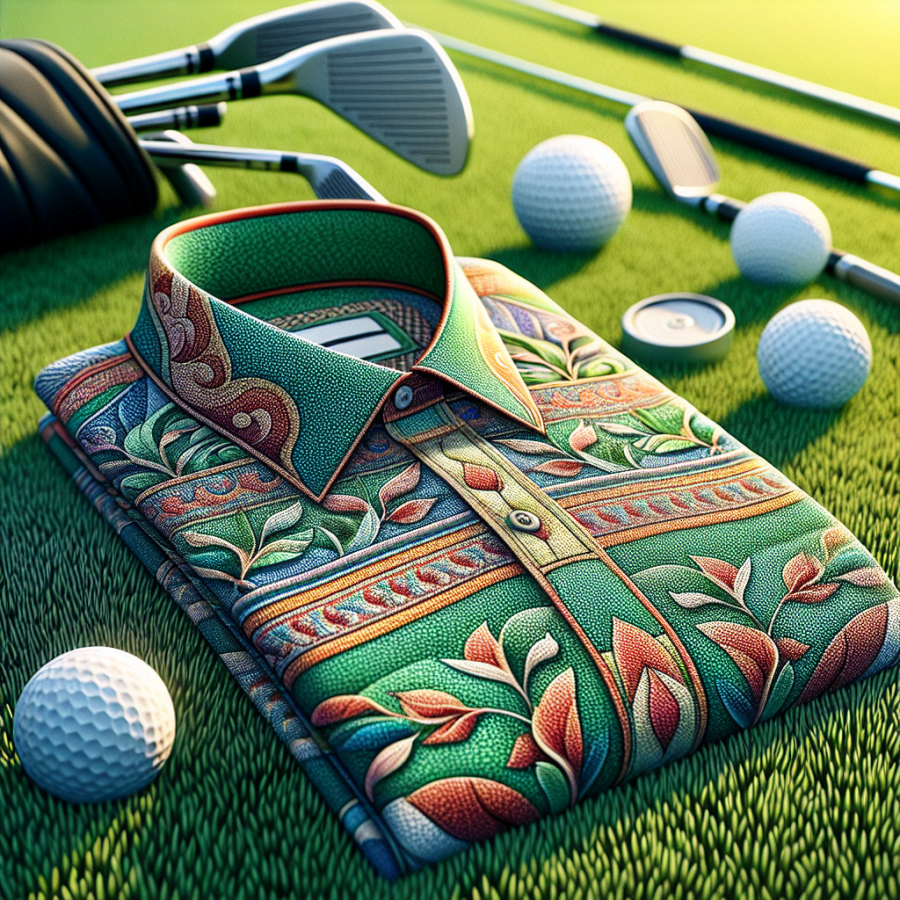The Evolution of Stylish Golf Sportswear Through the Years
Golf sportswear, including the iconic golf shirt, has gone through significant evolution over the years, keeping pace with the changing tastes, trends and technology, while maintaining its signature preppy look.
The initial emergence of golf attire dates back to Scotland in the 15th century, although at that stage, there was no distinctive golf clothing. Golfers back then dressed in their everyday clothing, which was generally uncomfortable and restrictive.
The first notable transition to dedicated golf sportswear came in the 19th century when golfers basically wore what was fashionable in the Victorian era. Men would predominantly wear a shirt with a high collar, a tie, plus fours (baggy trousers tied just below the knee), waistcoat, and jacket. Women, in the meantime, were expected to play in cumbersome long skirts, blouses with high necks and large hats. This obviously prioritized social convention over practicality.
As golf spread to America, it remained a sport for the elite and the dress code mimicked the upper class's formal attire. Critically, the early 20th century marked the introduction of the knickerbockers – baggy-kneed trousers which later transformed into the plus-fours in the 1920s – a shorter, more comfortable version of its predecessor.
The 1930s witnessed major shifts. The heavy clothing was replaced by lighter items made from fresher fabrics like cotton and linen. Men began to sport short-sleeved shirts sans jacket and tie, and this shirt quickly became a quintessential golf shirt.
The mid-20th century saw the advent of the classic polo shirt in golfing circles. In 1950, Lacoste, a company founded by tennis player Rene Lacoste, introduced the iconic short-sleeved, loosely-knit pique cotton shirt with a soft collar that could be turned up to protect the neck from the sun. This quickly became dubbed as the ‘tennis (and later golf) polo’.
The 1980s was a time of loud and vibrant styles – bright, bold and often neon colors became preferred choices. The golf attire began to reflect the extravagance of the era, bringing in abstract patterns, 'block' color polo shirts, and wider leg trousers.
Come the 1990s and the 2000s, designers started to introduce performance fabric into golf attire to increase the comfort level and functionality of the outfits.
Read also:
The Definitive Guide to Scoring in Baseball: A Step-by-Step Breakdown
Origins of the Golf Shirt: A Journey Back in Time
The origins of the golf shirt are so deeply enmeshed in the annals of sporting history that it is difficult to separate the two. However, despite its popularity among the trends setters and fashion-conscious individuals of today's world, many do not know about its rich and intricate history.
The creation of the golf shirt is credited to René Lacoste, a famous French tennis player, who in 1926 made an innovative and comfortable short-sleeved, pullover shirt with a placket and a collar. His invention was prompted by the uncomfortable dress shirts that tennis players were expected to wear at that time. He unveiled his creation at the 1926 U.S. Open Tennis Championship, which he won wearing one of his initial prototypes.
The "Lacoste" shirt, as it became famously known, was not only comfortable and practical, but its innovative design also gradually became a symbol of style and status. However, it was not until the 1950s that this garment began to make significant inroads into the golfing world. The transition from tennis to golf is credited to American golfer, Bernard "Bernie" Geoffrion, who saw the potential of Lacoste's creation while playing in the heat of Florida and insisted on its adoption for golf.
Geoffrion felt that, as a sport, golf also required ease of movement and comfort, so he began donning Lacoste's shirts while golfing. His colleagues and fellow golfers were quick to recognize the benefits of the shirt, and before long, it became popularly known as the "golf shirt".
The arrival of Ralph Lauren's Polo brand shirts in 1972 further bolstered the popularity of the golf shirt. Capitalizing on the polo playing elite’s style and integrating it with the comfort of the Lacoste's shirt, the Polo shirt became another synonym for the golf shirt, tapping into a wider audience beyond just golfers. This not only gave the shirts a more prominent presence in the golf world but also made a huge impact on their widespread acceptance as casual everyday wear.
Over the years, the style of the golf shirt has seen some changes. Collar designs have been fine-tuned, material compositions altered for better breathe-ability, and a larger variety of color choices have been introduced to keep up with evolving fashion trends. However, the fundamental design harking back to René Lacoste’s original invention has remained remarkably unchanged.




